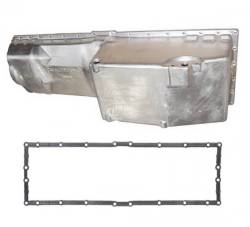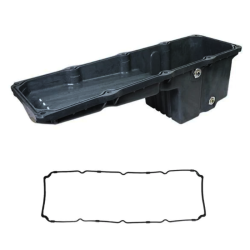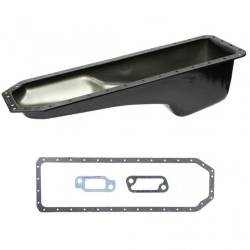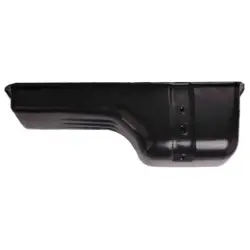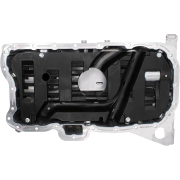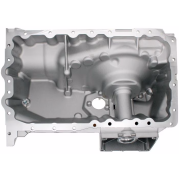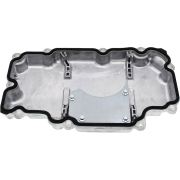- Home »
- Catalog »
- Shop By Auto Part Category »
- Engine Components »
- Oil Systems »
- Engine Oil Pans
Dales Super Store - Engine Oil Pans

The engine oil pan, a humble yet crucial component of an internal combustion engine, quietly performs a vital role in maintaining optimal engine lubrication. Located at the bottom of the engine block, the oil pan serves as a reservoir for engine oil, safeguarding the engine's vital moving parts.
Engine oil pans are typically constructed from durable materials such as steel or aluminum, chosen for their strength and resistance to corrosion and heat. They are designed to withstand the rigors of the engine environment, including exposure to high temperatures, vibrations, and the potential for impacts from road debris.
Select a Sub-Category
Engine Oil Pans Featured Products
More About Engine Oil Pans
The oil pan's primary function is to store and supply engine oil to critical engine components. The pan is equipped with an oil pickup tube or screen that draws oil from the bottom of the pan, ensuring a steady supply to the engine's oil pump. This lubricating oil is then circulated throughout the engine, providing essential lubrication, cooling, and protection to the crankshaft, connecting rods, camshaft, and other moving parts.
Oil pans are designed with features to facilitate proper oil flow and maintenance. Baffles and windage trays are often incorporated into the pan design to prevent oil sloshing during acceleration, deceleration, or cornering, ensuring a consistent supply of oil to the pickup tube. Drain plugs allow for convenient oil changes, while oil level indicators or dipsticks provide a means to monitor and maintain the proper oil level.
While oil pans are engineered to be durable, they can be susceptible to damage from road debris or impact. A damaged oil pan can lead to oil leaks, reduced oil pressure, and potential engine damage. In such cases, replacing or repairing the oil pan is necessary to maintain engine performance and longevity.
It's worth noting that some high-performance or specialized engines may feature oil pan designs optimized for improved oil control, cooling, or oil capacity. These pans may incorporate baffling, cooling fins, or increased capacity to meet the demands of specific engine applications.


